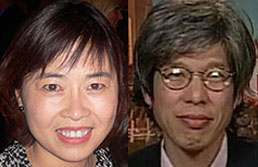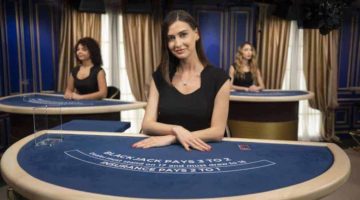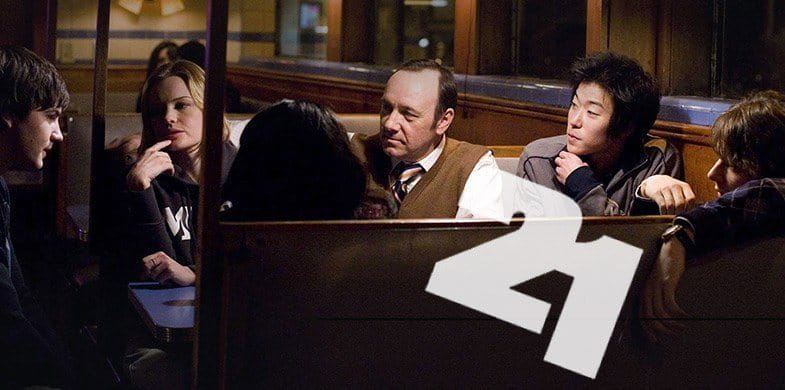- The MIT Blackjack Team was a group of students and ex-students from Massachusetts Institute of Technology, Harvard Business School, Harvard University, and other leading colleges who used card counting techniques and more sophisticated strategies to beatcasinos at blackjack worldwide. The team and its successors operated successfully from 1979.
- The MIT Blackjack Team was raking in profits of approximately $170 an hour, with payouts to investors and players determined by their win rates (simulated) and the number of hours played. Once the investors had taken their cut (which was considerable at 250% their investment), the players were taking home on average $80 an hour.
- It is only fair to say that the MIT team consisted of math geniuses, and their names are really worth to remember as they formed the MIT team for blackjack. By knowing math and learning card-counting techniques, they beat casinos across the US. During the 1990’s, they went their separate ways, and even so, they remained legends.
US Players and Credit Card, BitCoin Deposits Accepted!
The MIT blackjack team is probably the most famous group of professional players in the game of blackjack and the sport of card counting. This site would not be complete if we didn't write a little bit about them and what the true story was behind the famous blockbuster '21' movie. The idea behind the team would originate from Al Francesco, one of the original members of the Blackjack Hall of Fame inducted in 2002. Ken Uston is another huge name in the concept of blackjack teams like MIT. Most notably is his book 'Million Dollar Blackjack' which was released not too long before the blackjack team was created. Two other famous books about the team are 'Bringing Down the House' (which the movie '21' is based off of) and 'Busting Vegas' by Ben Mezrich. If you enjoy learning about card counting and blackjack, there is an excellent TV show called 'Breaking Vegas' on the History Channel as well.
The MIT Blackjack Team: An Effective Startup Model Its exploits were the subject of a book and made into into a film, but what secrets does the team's journey hold for founders and entrepreneurs?
In Photo: MIT team from the Oscar winning movie '21'
How MIT Started the Blackjack Team - Early History

The team started in 1979 at the Massachusetts Institute of Technology and consisted of students and ex-students from this school along with some from Harvard University and their business school as well. It started off as a mini-course named 'How to Gamble if You Must', which was a type of independent extracurricular 'club' when class was not in session. Some students from the Burton-Conner Dorm decided to sign up and try it out. At first, they learned about poker and play micro-stakes poker games. Later on they began to learn how to play blackjack and how to count cards.
They trained and improved their skills at the campus itself and inside the classrooms, much the same way it was described in the movie in fact. The people who signed on were skilled in mathematics and statistics and usually students in these fields. As you may know, card counting and learning basic strategy is all about numbers and probabilities. Those who are good at math and statistics would have a much better chance of doing it right and actually enjoying the math in the game.
Atlantic City, which has many large casinos like Las Vegas, was the first stop for this group. They wanted to test out their new skills here. Unfortunately, they failed quite badly and the original group broke up. Later on, a gambler who goes by the name 'Dave' proposed to form another team with J.P Massar, who was a graduate and also one of the people who organized the first trip out to Atlantic City. They wanted to take a great advantage of a special law in Atlantic City that allows card counters to play. Believe it or not, it is illegal to bar any card counters from playing at casinos in this city!
This new team consisted of 4 players with Dave. They also started off with a $5000 investment and this time they decided to go back to test their skills and were successful. Later on, new members started to join and they continued practicing the game during their own training sessions. They actually started getting on a roll and were winning on many weekends at the beginning but then that started to change. The students started to lose and lost some confidence in their abilities to beat the house. It was a mystery why they were doing so badly until they met up with Bill Kaplan.
Bill Kaplan, J.P. Massar and the new MIT blackjack team
The history of Kaplan is quite interesting. This is the man that actor Kevin Spacey, the professor, plays in the movie '21'. He received his Bachelors Degree from Harvard in 1977 and was going to attend Harvard Business School for a Masters Degree. He had done a lot of research on card counting and blackjack before he graduated. Bill decided to delay entry into Harvard Business for one year in order to move to Las Vegas and start up his own team. The money he used was from funding he received from Harvard after his graduation but the rewards were staggering. He made a 35 fold return on his investment or won 35 times what he brought with him, in only 9 months!
Later on in 1978, he had to go to Harvard Business School while his team continued to play in Las Vegas for the next 2 years. In 1980, Kaplan graduated and the team was tired out from playing in Vegas so they decided to go international. The team broke up since Kaplan could no longer manage his team over such long distances. At around this time, J.P. Massar from the MIT team met Bill Kaplan at a Chinese Restaurant. Massar overheard Kaplan and his conversation about how successful he was. Massar then invited Kaplan to come with him to Atlantic City and to watch his team and figure out what the students were doing wrong and why.
It turns out that Massar's team was doing many things wrong. Each student was using a different card counting system, so they were essentially on the wrong page. Those systems were complicated, they were making errors, losing the count or even each student having inconsistent counts. It turns out that the students spent most of the time arguing about mathematical methods and equations rather than actually playing the game in the casino. Later on, Kaplan gave Massar his recommendations and report on the students.
The advantage that these players got on the blackjack table was stunning. Due to playing perfect basic strategy and coupling it with card counting, they could get a 2% edge over the casino. Normally the casinos have between 2% and 10% edge over the player, which ensures that the player will eventually lose in the long term. The card counters now have ensured that the casino loses in the long run and basically turns the casino into a personal ATM, literally. It has been known that the players would use other strategies such as tracking aces and advanced shuffle techniques and could even get an edge as high as 4% over the casino. This larger edge means they would win more money more often. It has been reported that even 5% to 10% edges against the casino were possible but it was extremely rare and required a perfect game with an awesome count. Basically it's the card counting aspect that turns your negative chance into positive chance winnings.

This new team was a boon for Kaplan. He could now train a new team of the students locally. This time Kaplan used a systematic and much more organized process for the students. Now everyone followed strict rules to use a single card counting system, a similar betting system and strict training. Players had to report information such as what systems they were using, what casino they were playing at and what times they played. They had to pass some requirements before even being able to play at the tables. It turns out that Kaplan's formal management strategies and business organization skills paid off and they became wildly successful.
In Photos: Professor Micky Rosa from '21' movie
After about one ummer season since Kaplan met Massar, the first MIT blackjack bank was started. It was built up through investments by outside investors and the students themselves. There was about $89,000 initially and the MIT team consisted of 10 players along with Massar and Kaplan. They doubled the size of the bank in only 10 weeks and were highly successful. They theoretical figure for earnings was to make $170 per hour and the actual result ended up being about $163 per hour, which was very close to the ideal statistics. The winnings were split among the players and the investors in proportion to what they put into the bank and the investors were making a 250% return on investment! This was astronomical compared to 15% annually in the stock market, which in itself would be amazing.
MIT team history in the 1980s
1980 was the year when the MIT blackjack team really took off. By the time 1984 came around, there was about 30 players and had about $350,000 in money to play with. At about this time, Bill Kaplan had become notorious at casinos around the country. Casinos had people following him around and were looking out for the guy because of how much money he was taking from them. This made it impossible for him to be effective on the team and he decided to quit for awhile and go full time in the real estate business.

Occasionally he would play once in awhile and invest some money into the team but he was not active. The team after 1984 was generally run by Massar and a few of the newer members: John Change and Bill Rubin. Again, as time went on between 1985 and 1988, the team was struck with fatigue and 'burn out' and eventually lost interest. By the end of the decade, the MIT teams played through 22 banks and 70 people were involved as team players.
Strategy and systems used in the 1990s
The team recruited players at the Massachusetts Institute of Technology by posters and flyers that were hung up around the campus. It was hard to get in and it took a lot of work, practice and skill. The training itself did not cost anything and it was almost like a hobby for many students. When they got good enough, they had somewhat of a final exam called the 'trial by fire', which was an extremely difficult test of their skills before they would become full members. A player would have to play through 8 to 10 standard decks of cards (a large shoe) and play a perfect game as well as keeping the correct count. Even after this, they still had more training and played in real casinos with small money before finally being able to handle the big high-stakes blackjack.
One notable student was John Chang, an undergraduate at the school who joined in 1982. Chang would eventually help run the team later on in the decade and into the 90's. In 1992, Kaplan, Massar and Chang made a huge move. They decided to take advantage of a new casino that was opening up nearby called Foxwoods Casino,located in Connecticut. Kaplan was able to raise a million dollars by forming a new team around 'Strategic Investments', a Massachusetts Limited Partnership. Ironically, this was done through his knowledge of real estate investing. This marked the revival of the MIT blackjack team, addition of new members and training.
The team then spread across the country with members in many states along the East Coast, Midwest and the West Coast. Another notable player in the MIT team history was Sarah McCord a student who joined in 1983. In this new team, she was responsible for the all the recruiting and training that happened in the West Coast as she lived locally in California.
They started gambling all over the world at the same time and the casinos were taking some serious hits. They have never seen such a coordinated assault against the game of blackjack in so many areas at the same time. Some would say that this would be the golden age of the MIT blackjack team. Eventually the casino started fighting back by figuring out who the card counters were and banning them from playing there again but MIT kept hitting them even harder by sending new players with new faces to the casinos so when one player got banned, another 'stranger' could come in and take their place. At one time, the team won nearly $500,000 during a single weekend in Las Vegas
Eventually the casinos caught on and had investigators find out that a large concentration of the caught players were from Cambridge. Then that tied in with MIT and they figured out where they were all coming from. As another tool to fight back, they took the yearbook and stored the pictures in a database at the casino to keep an eye on anyone who could be from MIT and make identification much easier.
This seemed to be the end of the team. Most of the best players on the team were not allowed into the casinos anymore. Also, they were not spending as much time working on their real estate business, which was actually much more profitable than blackjack anyways. On the last day of the year 1993, General Partners chose to close down Strategic Investments. Their limited partnership ended and the money was paid out to the players and investors of the team.
1994 - This was not the end of the MIT blackjack story
After the main MIT team broke up in 1993, a small group the MIT players decided to create their own independent teams. There were two notable teams. One was the Reptiles, run by Mike Aponte, Wes Atamian and Manlio Lopez. The other one was the the Amphibians, run by Semyon Dukach. They both sort of competed against each other to see which team won more money. Some say that each team won over a million dollars and had over 50 members at one time or another. One player from the Amphibians team actually won the secret Blackjack Ball tournament in its third year and was crowned the title 'The Best Blackjack Player in the World' by Max Rubin, the famous host of the annual event. The winner's unofficial name was known as 'Most Feared Man in the Casino Business'.
Also See:
Click image above to visit CasinoMax and play blackjack (free or real money).
By Henry Tamburin
Bringing Down The House by Ben Mezrich, a book the describes how a team of MIT students won millions playing blackjack, has sparked a lot of interest from the general public in blackjack and in particular card counting. The book was a NY Times bestseller and it was made into a movie (“21”). Because of all this publicity about the MIT team and their accomplishments, I’ve been receiving a lot more inquiries about how this team of students was able to pull off their big score. Here is how they did it.
How did they do it?
First off, they didn’t cheat. They basically learned the following skills- the basic playing strategy, card counting, and team play – to win at blackjack.
Basic strategy is simply a set of rules that tells you the best way to play every hand dealt to you. For example, one of the basic strategy plays is to always split aces and 8’s no matter what the dealer’s upcard. You can find the basic strategy in blackjack books (including my Blackjack: Take The Money & Run) and it is a pre-requisite for winning at blackjack.
Next, the MIT team members learned a card counting system. This is a way to keep track of the cards as they are played after a shuffle. A grouping of cards, for example, the 2 through 6’s, are assigned a value or tag of plus 1. Likewise the high cards – tens, picture cards, and aces – have a minus 1 tag. They add and subtract the tags for each card that is played from the shuffled deck(s) to arrive at a sum known as the running count. The more positive the running count, the more high cards are left in the undealt cards which gave them the advantage, so they bet more (often tens of thousands). When the running count was negative, they bet less because there was an abundance of small cards left in the undealt cards a situation which gave the house a decided advantage. The team members, therefore, waited for the deck to get good before they bet large sums of money.
Steve interviews Mike Aponte of the MIT Blackjack Team. They discuss:
- how Mike first became involved with the team
- how they operated
- his role on the team
- and their biggest success
- Mike also explains what he did after the team broke up
- what he is doing today
- and his best advice for blackjack players.
This was no “one-man job”
The member of the MIT team did not play solo much like most card counters would do. They went one step further by using spotters, Big Players, and a team bank. Here’s how this works.
Several spotters would enter a casino and position themselves at different blackjack tables. They counted and when the count went positive, they wouldn’t increase their bets, but rather signal another team member (known as the BP or Big Player) to enter the game with big bets. The BP continues to bet big until the spotter gives another signal that the deck has gone bad (or negative) and then the BP leaves the table. The BP basically wanders around the casino waiting for another call-in from a spotter.
Because the spotters always bet the minimum on every hand the casino is less likely to finger them as card counters. The BP acts and appears as just another high roller as he enters the game making large bets hand after hand. Depending on how high the count was when he’s signaled into the game, the BP’s edge can be quite high.

The BP must know the spotter’s signals. For example here’s a few signals mentioned in the book: Arms folded across the chest means the deck is warm; Arms folded behind the back indicates the deck is hot; Hands in the pockets indicate the deck is even hotter;
Running a hand through hair means something is wrong – get out of the casino – fast!
Besides the physical signals, their team also used oral signals to indicate to the BP what the count was so the BP knew how much to bet. These oral signals were keywords that they would use in a sentence. For example, tree meant a count of plus 1. Stool was plus 3, bowling was plus 10. So if the spotter said something like “I’d rather be bowling right now” that indicated to the BP that the count was plus 10 and. Therefore. he knew how much to bet.
Probably the biggest weapon the MIT team had going was a team bankroll. Not only did each player put up a sum of money, but investors had invested in the team. With one large team bank, every player on the team used this one combined, large bankroll as if it were his or her individual bankroll. This in turn allowed the MIT team players to bet larger amounts of money with the same risk compared to playing solo. And the greater amount of money that a card counter can get on the table, the more money he or she stands to win. This is what makes blackjack teams so powerful.
Here’s an example of how a team bank works compared to a card counter that plays alone. Suppose Player A plays solo with a $5,000 bankroll and wagers up to $100 per hand when the advantage shifts in his favor. His earning potential as a card counter is $25 per hour.
Player B joins Player A to form a team. Their combined bank is $10,000 allowing each player to increase their maximum bet from $100 to $200. The team of two players’ profit potential is now $100 per hour so each player averages $50 per hour profit, twice the earnings compared to playing solo.
Card Counting Mit
As a general rule the profit potential of a team of skilled players is equal to the profit potential of each individual if playing solo times the number of players on the team squared. So if a card counter has the potential to earn $25 per hour playing blackjack, this is what he could earn playing on a team.
Solo Earnings Potential Number of Team Players Individual Earnings on Team
$25/hr 2 $50/hr.
$25/hr 3 $75/hr
$25/hr 4 $100/hr.
$25/hr 5 $125/hr.
The more members on the team the more money a card counter stands to earn. And of course the more you money you wager the higher the individual earnings.
Playing on a team also smoothes out the bumps in the road and makes the negative swings more manageable and tolerable. Teams also play more hands per hour compared to a solo player so they will get into the “long-run” a lot quicker. This means that the probability is higher that a team of players will be ahead after playing x hours compared to a solo player playing the same x hours.
The life of a card counter can be lonely, especially when they are losing. But when they are playing on a team and have a disastrous losing day, members often provide support and sympathize with their plight (this is clearly brought out in the book). There is also the possibility that even though one member of a team lost, other team members have won. Secondly, having a group of individuals trying to achieve the same goal (winning x amount of money) often provides an uplifting psychological advantage. Thirdly, team players are more apt to share intelligence about games with better rules and penetration which makes winning easier for all team members.
The Mit Blackjack Team Members
It took months and months of practice before the MIT team members were ready to take on the casinos. And even though they won money in the long run, over a few days and weeks of play they took their lumps, which is normal for card counting. Their key to success was their understanding of risk and return and their large bankroll.
Mit Gambling
Henry Tamburin has been a respected casino gambling writer for the past 50 years. He is the author of the Ultimate Blackjack Strategy Guide and was editor of the Blackjack Insider newsletter. You can read his latest articles on blackjack, video poker, and his personal playing experiences at https://www.888casino.com/blog/writers/henry-tamburin